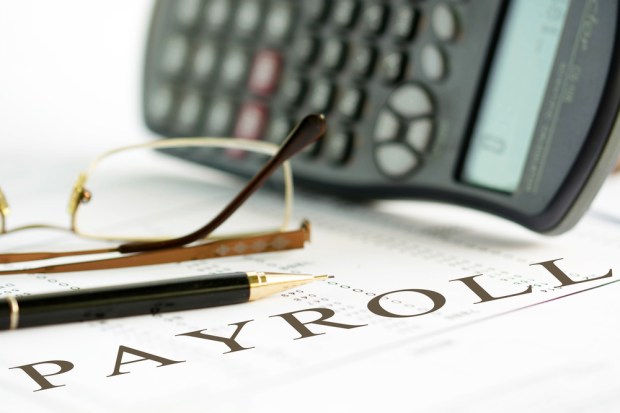Apple Pay Signals A New Generation Of The Payroll Card

Traditionally, payroll cards have been a tool employers use to pay their employees that are un- or underbanked. Well, as with so many other things, millennials and a new generation of workers are flipping that model on its head, says Gary Lott, Division Vice President and General Manager at ADP, which provides corporations with cloud solutions for payroll and human resources.
[bctt tweet=”A new generation of workers is flipping the payroll card model on its head.”]
The role of the payroll card is changing, Lott told PYMNTS in a recent interview; that shift means payroll card providers have to keep up. For ADP, that meant getting on board with a big name in mobile payments.
Broadening Role Of The Payroll Card
Today, there are a slew of reasons an employee or employer may choose the payroll card, Lott said. But fundamentally, the tool initially gained traction for a very specific purpose.
“People either didn’t want to get a bank account, or couldn’t, or there were associated fees with a bank account that they didn’t want to incur,” he explained. “That’s what started it. But now, while that demand is still prevalent, we find a lot of people that have accounts to split their pay and use these cards to manage discretionary spend.”
Employees today see the advantage of payroll cards as a way to get a better grip on their spending habits, having separate bank accounts and linking one to a payroll card to separate spending money from saved funds. There are a few groups fueling this trend, Lott said.
For instance, parents can use a payroll card to watch over the spending of their children — often a much safer strategy than handing a new spender a credit card.
A developing population of independent, part-time and contract workers is driving the demand for payroll cards, too.
“We certainly witness the trends” of a growing on-demand workforce, Lott said. “Certainly, payroll cards are becoming more prevalent and more used in that capacity.”
Behind both the trend of using payroll cards to control spend and to adapt to a rising demographic of the workforce are millennials, the executive added.
“Millennials getting into the workforce are very keen to this type of processing and transacting,” Lott explained.
Apple Pay
With this in mind, ADP recently announced that its payroll card product, the ALINE Card, would now integrate into Apple Pay. It was part of the company’s strategy not only to expand the experience of employees obtaining and using the funds from their paychecks but also following the demands of a new generation of employees, which has also taken to mobile payment innovations in recent years, said Lott.
According to the executive, when the Apple Pay integration was still being tested, before its formal launch, ADP clients found the solution online and began utilizing it before it went public. For Lott, that eagerness to adopt a mobile wallet-compatible payroll card is indicative of how payroll habits are changing.
“The understanding and the fundamentals of accepting these types of applications is out there,” he said.
ADP and other payroll solutions firms naturally have to follow where demand leads them. Overall, Lott said, linking a payroll card to Apple Pay is about quenching that thirst not only for a payroll card but for mobile solutions as well. For employers, the decision is “to simplify payroll processing, to mitigate expenses of payroll processing and to create a robust experience for the employee when it comes to transacting,” he said. “These are the fundamental underpinnings of why we wanted to do this.”
Regulatory Guardrails
But just as service providers and innovators have to mold themselves to consumer demand, regulators have to mold their rules to protect the consumer — in this case, employers and their employees.
For Lott, regulation is not something to be feared. “The regulatory clarity that we’re seeing is helpful, and I think it’s good,” he said, adding that the guardrails being built to steer the industry is all about ensuring employees have free access to their funds and have choice when it comes to accessing their paychecks.
[bctt tweet=”‘The regulatory clarity [over payroll cards] that we’re seeing is helpful.'”]
The fees associated with payroll cards are being faced with legal challenges in several states and, in Pennsylvania, have even spearheaded the debate as to what constitutes lawful money under the state’s Wage Payment and Collection Law.
Lott explained that early in the game, ADP took a “conservative” approach to payroll card fees, like overdraft charges or dormancy fees. “Some of the things that have gotten providers in trouble in the past with those fees, we haven’t had those fees as part of our structure in quite some time.”
Regulation is providing clarity to the payroll technology and services space as to what can and can’t be charged to employees using these tools. While Lott says that, overall, this is a positive development for the industry, regulators should be mindful that they don’t trip up innovation and progress — the kind that allows a payroll card to land on a modern service like Apple Pay.
“I do think regulators need to make sure that as they do this, they don’t make it so difficult for people to access these instruments that providers can’t provide or don’t want to provide them,” he said. “But I don’t think we’ve gotten there yet.”
